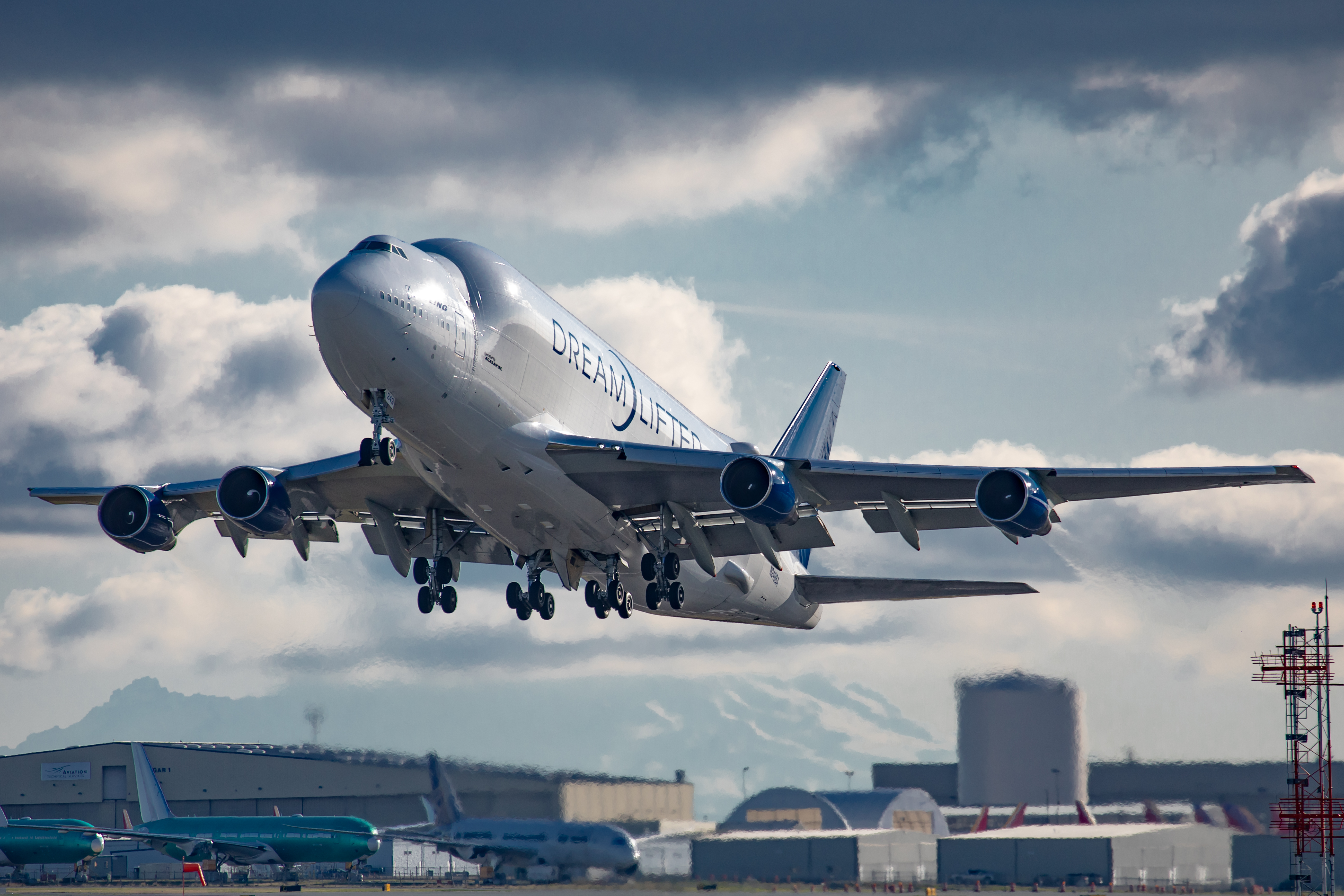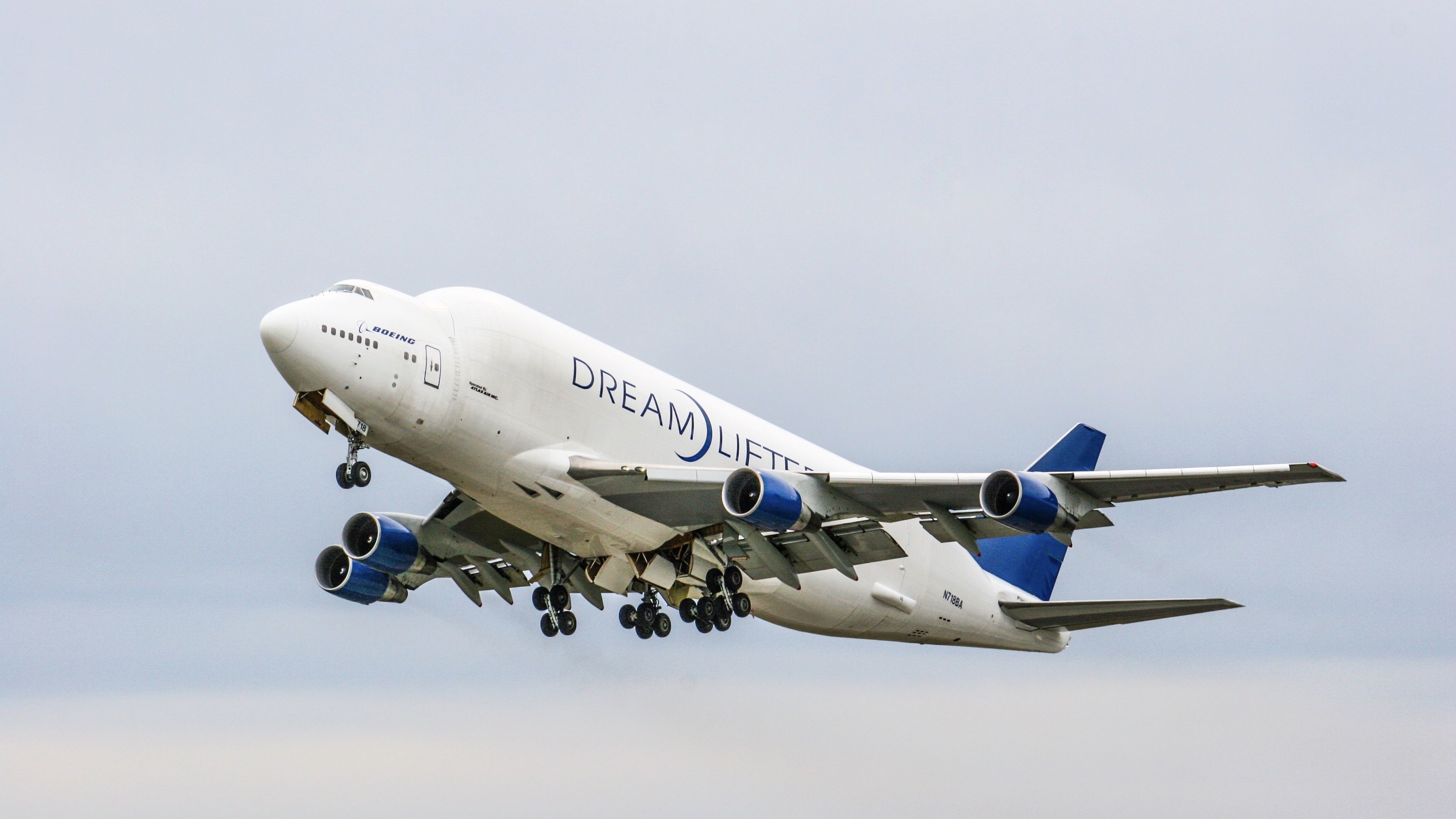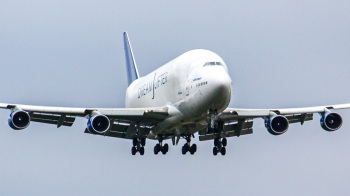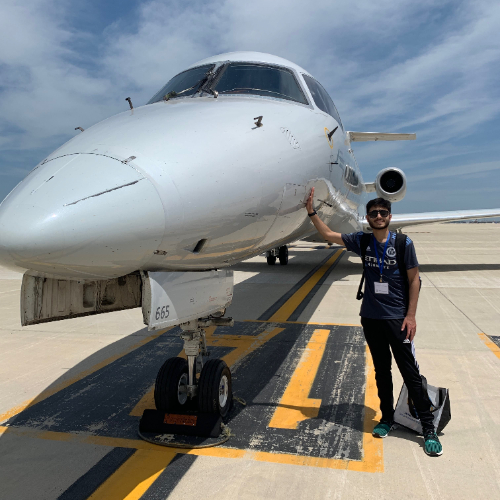Building an aircraft is no easy task. In many cases, various parts of an aircraft are built in different places. As such, transporting these parts to one central factory where they can be assembled has proven to be a headache for airplane manufacturers.
This is precisely why Boeing came up with its "Dreamlifter", a modified Boeing 747 designed to facilitate the transport of individual aircraft parts.
Combating Logistical Nightmares
Transporting various individual airplane parts usually involves the use of marine vessels, trains, and trucks. The latter two methods would be ideal if manufacturers locally built their parts but not so much if those parts were coming from all over the world.

Therefore, when Boeing was crafting its 787 Dreamliner program (originally called the 7E7), the planemaker announced in 2003 that it would use air transportation as the primary means to transport parts for assembling 7E7 aircraft.
This is because the 787 had various components deemed too large to be shipped in standard marine shipping containers and even on dedicated cargo planes like the Boeing 747-400F, Antonov An-124, and An-225.
Switching to air cargo transport was a helpful move for Boeing given multiple parts of the 787 aircraft would be manufactured overseas in Japan and Italy. Air transport would make delivering the parts to the main assembly factory much quicker as opposed to the lengthy wait times that would occur from the other methods of transportation.
No Longer a "Dream"
Boeing took the initiative of converting three ex-passenger 747-400s into an outsized configuration so the company could easily transport components for the 787. A fourth aircraft was later added to the lineup.

These four aircraft all came from Asia. Two 747-400s initially operated for China Airlines (of Taiwan) and were sister aircraft registered B-18271 and B-18272. One 747-400 flew with Air China (of mainland China) as B-2464 and another came from Malaysia Airlines formerly being registered 9M-MPA.
All of these planes were built between 1990-1992 making them 32-34 years of age currently.
The 747s were sent to Taipei Taoyuan International Airport (TPE) in Taiwan for conversion. This is because local company Evergreen Aviation Technologies Corporation (a joint venture between EVA Air and General Electric) would complete the conversions.
These 747s would be converted into what is called an "LCF" (Large Cargo Freighter) and have a volume of 65,000 cubic feet (1,840 cubic meters). This was three times the existing cargo capacity of a standard 747-400F.
Conversion of the first aircraft began in 2005. Boeing collaborated with Rocketdyne (which has since been sold to Pratt & Whitney) and Spanish company Gamesa Aeronautica.
The first completed Dreamlifter, N747BC (formerly Air China's B-2464) rolled out of the hangar in Taipei on August 17th, 2006. The aircraft completed its maiden test flight from TPE on September 9th.
N747BC was flown to Boeing Field in Seattle to complete the remainder of its testing. It was in Everett, Washington where testing of the aircraft's iconic "swing tail" was completed.

Boeing officially announced the 747 LCF's name would be the "Dreamlifter" in December 2006 as a reference to the 787's "Dreamliner" name. Furthermore, the Dreamlifter's logo was very similar to that of the Dreamliner.
As a fun fact, the Dreamlifter aircraft do not feature winglets as are normally found on 747-400s. While the original aircraft had winglets pre-conversion, the winglets were removed to account for excess vibration and other handling characteristics.
All four Dreamlifters became operational by February 2010 and have since played a crucial role in flying Boeing 787 Dreamliner parts to Boeing factories in Everett, Washington, and North Charleston, South Carolina.
One Dreamlifter even carried 500,000 face masks to Salt Lake City. These would be used by Utah school children and teachers during the height of the COVID-19 pandemic.
Passengers Encounter Bedbug Infestation on Multiple Turkish Airlines Flights » Maldivian Airlines Introduces First-Ever Widebody Aircraft, Plans New China Flights » Export Development Canada Secures Aircraft Repossession in Nigeria Under Cape Town Convention »
Comments (0)
Add Your Comment
SHARE
TAGS
INFORMATIONAL boeing dreamlifter747 dreamlifterboeing 747boeing 787747 lcfRECENTLY PUBLISHED
 Could You Survive a Plane Crash? The Unlikely Science of Plane Crash Survival
With air travel consistently being heralded as the safest form of public transport, most of us do not board a plane pondering our chances of survival in the event of a crash. But, is it possible to survive one?
INFORMATIONAL
READ MORE »
Could You Survive a Plane Crash? The Unlikely Science of Plane Crash Survival
With air travel consistently being heralded as the safest form of public transport, most of us do not board a plane pondering our chances of survival in the event of a crash. But, is it possible to survive one?
INFORMATIONAL
READ MORE »
 Maldivian Airlines Introduces First-Ever Widebody Aircraft, Plans New China Flights
Maldivian, the government-owned national airline of the Maldives, has just welcomed its first-ever wide body aircraft: the Airbus A330-200. With the new aircraft, the carrier also plans brand-new long haul international flights to China.
NEWS
READ MORE »
Maldivian Airlines Introduces First-Ever Widebody Aircraft, Plans New China Flights
Maldivian, the government-owned national airline of the Maldives, has just welcomed its first-ever wide body aircraft: the Airbus A330-200. With the new aircraft, the carrier also plans brand-new long haul international flights to China.
NEWS
READ MORE »
 Thousands of Flights Impacted as Winter Storm Blair Hits U.S.
Winter Storm Blair has unleashed a huge blast of snow, ice, and freezing temperatures across the Central and Eastern United States.
As of Sunday afternoon, over 6,700 flights and counting have been disrupted. This includes cancelations and significant delays leaving passengers scrambling to change flights and adjust travel plans.
NEWS
READ MORE »
Thousands of Flights Impacted as Winter Storm Blair Hits U.S.
Winter Storm Blair has unleashed a huge blast of snow, ice, and freezing temperatures across the Central and Eastern United States.
As of Sunday afternoon, over 6,700 flights and counting have been disrupted. This includes cancelations and significant delays leaving passengers scrambling to change flights and adjust travel plans.
NEWS
READ MORE »





